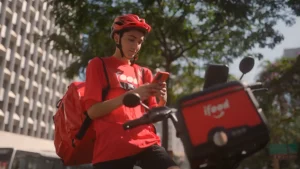In May 2022, 43,292 traffic accidents had already been recorded in Brazil, with 69,871 victims (injured and unharmed) and 716 deaths, according to the National Accident Registry and Traffic Statistics. Until the publication of this text, 529 people had accidents and 5 people died every day on the country's streets and roads.
But is there a solution to this reality? Yes, and it depends, in part, on changes in the behavior of drivers, motorcyclists, cyclists and pedestrians.
Thus, behavioral change is the ultimate goal of defensive driving. Instead of speed and the spirit of competition, safety and harmony in traffic are valued.
“We want to raise awareness among drivers so that they leave the defensive driving course not out of fear of driving, but knowing that the next trip will not be the last. If he works on this, the more trips he makes, the more he will earn”, says Gerson Vecchio, defensive driving instructor at SEST SENAT.
What behaviors should be avoided
Behavioral change involves awareness that traffic is made up of many people and everyone has their share of responsibility for making it safer and less hostile and breaking patterns acquired over time.
For example: overtaking in a prohibited place or zigzagging in corridors. Is it really necessary to make this decision that puts your own life and the lives of others at risk?
Finally, critical behaviors for traffic safety will be considered: competitiveness, disrespect for traffic rules, lack of attention and care and irresponsibility.
Defensive driving is good for the wallet too
By definition, defensive driving is a driving style in which the driver of a vehicle (anyone) drives in order to avoid accidents despite the actions of other traffic agents and adverse conditions, that is, everything that can make driving difficult. of the vehicle (drivers, roads, weather, cargo, passengers, etc.).
In addition to safer traffic for everyone and the increased possibility of returning home the same way you left, whoever practice defensive driving It also reaps financial benefits, as this driving style saves on fuel and vehicle maintenance costs, avoids fines, reduces medical treatment costs and eliminates downtime to recover from an accident.
“The best route is not always the closest or the fastest,” explains Vecchio. “If you accelerate too hard, you brake too hard. And whoever does this, uses more tires, more brake pads. It's an unnecessary expense. If your plan calls for a 10-minute trip, why would you want to reduce that time?” questions.
The 5 elements of defensive driving
The principle of defensive driving is to make traffic safer, regardless of whether the other components of this ecosystem also practice this driving style.
Important to emphasize: this driving style aims to make traffic safer, not slower. Because driving well below the permitted speed on a road is not an action that will promote safety.
There are five elements that make up defensive driving:
- Knowledge: about information about the vehicle, the route and the ability to drive the vehicle);
- Attention: to ensure everyone’s safety, it needs to be diffused, that is, to everything and everyone around);
- Forecast: ability to anticipate dangerous situations;
- Decision: make the right decision to avoid getting involved in accidents. The best decision is the one that will be based on knowledge, attention and prediction;
- Ability: have the ability and training to drive a vehicle.
7 practical defensive driving tips
While there are actions that do not contribute to traffic safety, there are others that do. And believe me, driving too slowly is not one of them. “Your speed must be at least half the maximum allowed when you are not in the right lane, otherwise it will cause an accident. There is even an infraction provided for in the Brazilian Traffic Code”, says Vecchio.
Check out some tips below that can help improve your safety and traffic safety.
1. Take up your space in the lane, this prevents another vehicle from competing for space with you;
2. See and be seen. Position yourself so that everyone in traffic can see your vehicle. Motorcyclists must be at the front or rear diagonal of the vehicles, to avoid the blind spot of the rear view mirrors;
3. Another tip for bikers. Motorcycles must be aligned in the direction of the wheels of the vehicle in front to be able to avoid any obstacle on the road;
4. When overtaking, signal, assess the situation, wait and only then get in front of the other person, always on the left — and not on the center or right;
5. Slow down at intersections, even when you are in the right-of-way;
6. Be aware of what is in front of you and around you;
7. Maintain a safe distance (segment distance) from the vehicle in front for safe braking (choose a fixed point on the road and when the vehicle in front passes it, count how many seconds it takes you to pass the same point. It will be safe if the time is 3 to 4 seconds, depending on weather conditions)


